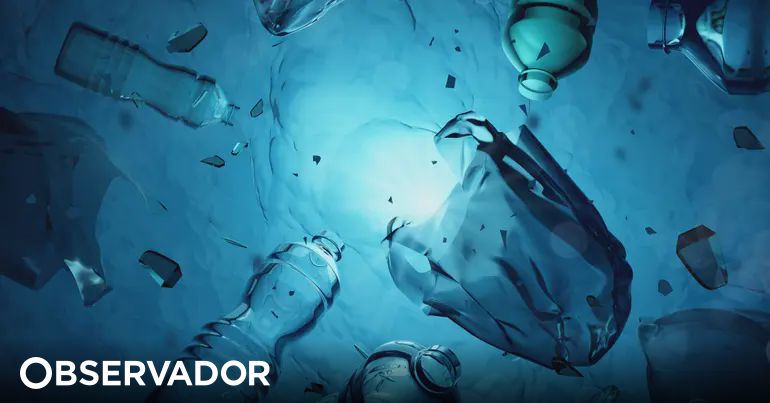
Researchers at the RIKEN Center for Emergent Matter Science (CEMS), in Japan, have developed a new plastic that is as strong as conventional plastic and biodegradable, with the special characteristic of decomposing in seawater, it was announced this Thursday.
The experimental findings of the team led by Takuzo Aida are published in Friday’s edition of the scientific journal Science, says RIKEN in a text about the work.
Scientists have been trying to develop materials that can replace traditional plastics, which are unsustainable and harmful to the environment. Although some recyclable and biodegradable plastics already exist, the latter, like PLA (or polylactic acid), often end up in the ocean, where they do not degrade.
The result is microplastics (pieces less than five millimeters), which spoil aquatic life and enter the food chain, potentially ending up in people’s bodies.
“With this new material, we have created a new family of plastics that are strong, stable, recyclable, can serve multiple functions and, most importantly, do not generate microplastics”says Takuzo Aida, quoted in the RIKEN text.
The chemist’s team focused on supramolecular plastics (polymers with structures that stay together through reversible interactions), which can degrade or recycle, to try to solve the problem of microplastics.
The new plastics were made by combining two ionic monomers, which form “salt bridges” in the form of a network, which gives them strength and flexibility.
Monomers are small molecules composed of a single mer, with polymers being made of multiple mers.
“In initial tests, one of the monomers was a common food additive, sodium hexametaphosphate, and the other was any of several monomers based on guanidinium ions”, states the text, adding that both “can be metabolized by bacteria, guaranteeing the biodegradability once the plastic is dissolved and its components separate.”
While the bonds of supramolecular plastics are “reversible in nature,” the salt bridge structure of the new material is irreversible unless exposed to electrolytes such as those found in seawater.
The scientists’ main discovery was “how to create these irreversible cross-links selectively”.
When the new plastic was dissolved in salt water, scientists “were able to recover as powders 91% of the hexametaphosphate and 82% of the guanidinium, indicating that recycling is easy and efficient” and, on land, sheets of the new plastic “completely degraded over 10 days, providing the soil with fertilizer-like phosphorus and nitrogen.”
After creating “a strong and durable plastic”, which “can be dissolved under certain conditions”, Researchers tested the quality of the new material, concluding that it is non-toxic and non-flammable (“which means there are no emissions of CO2”, the main greenhouse gas), as well as can be “reconfigured at temperatures above 120 °C like other thermoplastics”.
According to RIKEN, the team was able to produce more and less strong plastics with varying tensile strengths, which means that the new material “can be adapted as needed” and transformed into a rigid plastic or one similar to rubber and silicone. Sea-degradable plastics can be used in 3D printing.
Source: https://observador.pt/2024/11/21/novo-plastico-reciclavel-e-degradavel-no-oceano-pode-ajudar-a-acabar-com-microplasticos/

